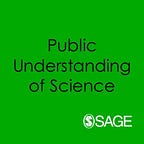Secularity and Science — What Scientists Around the World Really Think About Religion
Review by Will Mason-Wilkes
By illuminating the range and complexity of scientists’ perceptions of religion, Secularity and Science provides an empirical foundation for interventions in normative debates on the ‘proper’ relationship between science and religion
This volume investigates professional scientists’ attitudes towards, beliefs about and practices relating to, religion in eight national contexts, France, Hong Kong, India, Italy, Taiwan, Turkey, UK and US. This continues a welcome shift of disciplinary focus away from exclusive analysis of Western countries. The analysis of scientists’ perspectives complements recent work in the sociology of science and religion where the understandings of and attitudes towards science of members of the public of different faiths in a range of countries were investigated.
Conceptual and methodological challenges are foregrounded early in Secularity and Science. The complexities of capturing attitudes to ‘religion’ are acknowledged. The cultural and taken-for-granted nature of some religious and folk-religious practices in non-western contexts are carefully considered within the relevant case study chapters. This helps the authors avoid analytical problems which may result from importing cultural categories from one context into another where their meaning is less clear.
The views of scientists at different career stages, at ‘elite’ and ‘non-elite’ universities and in different disciplines — biology and physics — are included to ensure a representative sample of views is reported. However, the attitudes of scientists who work outside of the academy, who carry out potentially more routine, less novel or experimental, though nevertheless significant, scientific work, are not captured. This is disappointing, as industry scientists may be expected to have different views from academic scientists on the relationships of science and religion.
After key concepts and methods have been considered, subsequent chapters provide brief summaries of relations between science and religion in given national contexts (with Hong Kong and Taiwan combined into a single chapter). These summaries generally focus on recent historical public or media controversies (or lack thereof) between science and religion. Results of surveys of professional scientists in the locality are provided, followed by more in-depth accounts based on qualitative interviews with a subset of survey respondents. This structure allows for straightforward comparison of the quantitative findings across national contexts, but the analysis of the qualitative findings could, in places, be further developed.
A key finding, evidenced in the quantitative strand of the work, of major significance to scholars interested in the sociology of science and religion, is the diversity of perspectives on the relationship between science and religion exhibited by professional scientists around the world. Most consistently reported across every national context is the ‘independence’ perspective, characterised by the authors as viewing science and religion as dealing with fundamentally different aspects of reality; this view is reported by around half of scientists in each of the national contexts studied.
In the US, UK and France, the ‘conflict’ perspective (i.e. that science and religion are inherently antagonistic to one another) is reported by around a third of scientists, but this is not a majority view amongst scientists in any of the localities studied. In Hong Kong only 16% of professional scientists report a conflict perspective, and in Taiwan this falls to 9%. In Turkey, 32% of scientists report a ‘collaboration’ view (i.e. that science and religion actively support each other), more than the 26% who report holding a conflict view. Secularity and Science therefore provides evidence that a conflict perspective being widely held by scientists is peculiarly occidental, whilst highlighting that even in Western contexts, ‘conflict’ is a minority position.
The identified differences in religiosity between professional scientists and the general public within each national context are also intriguing. In Western contexts scientists are significantly less likely to be religiously affiliated than the general public. In the US, for example, 61% of scientists are religiously unaffiliated, compared with 34% of the general public, potentially reinforcing notions of the secularising effect of science. Elsewhere, e.g. India, there is very little difference in religiosity between scientists and the general public, with 94% of scientists religiously affiliated compared with 98% of the general public. Indeed, in Taiwan and Hong Kong, religiosity amongst scientists matches or exceeds religiosity amongst the general public.
As with the relative absence, globally, of the conflict perspective, this finding undermines simplistic narratives about the necessary antagonism between science and religion. Similarly, it is a useful reminder to researchers to attend to the specific national, cultural, political and economic contexts in which science and religion interact to properly make sense of their relationship in any given time and/or place. As importantly, by illuminating the range and complexity of scientists’ perceptions of religion, Secularity and Science provides an empirical foundation for interventions in normative debates on the ‘proper’ relationship between science and religion.
Will Mason-Wilkes is an independent scholar affiliated with the School of Philosophy, Theology and Religion, University of Birmingham, UK. He researches the relationships between science, religion, media and democracy. His paper, ‘Divine DNA? “Secular” and “Religious” Representations of Science in Nonfiction Science Television Programs’ is available online in Zygon: Journal of Religion and Science.
